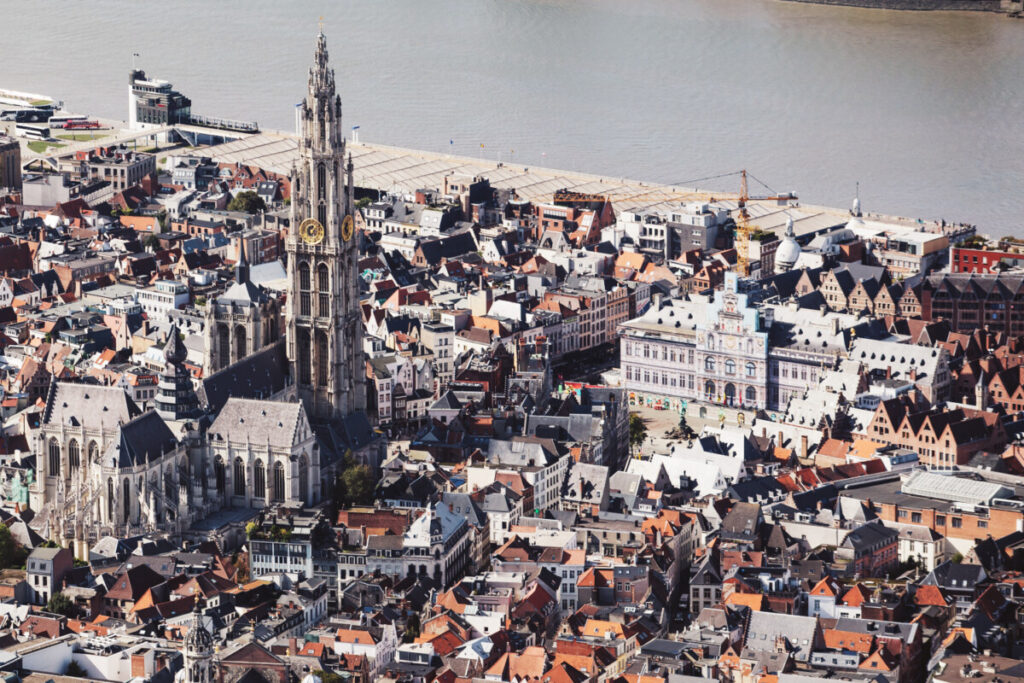About

Urban Agency Network
The Urban Agency network is a Scientific Research Network that receives funding from the Flemish Research Council (FWO). It brings together urban studies institutes or centers from across Europe and beyond that conduct interdisciplinary research on urban questions.
Building on in-depth interdisciplinary research on the relationship between urban theory and urban history (see the USI FWO-WOG ‘Urban Agency II: The Historical Fabrication of the City as an Object of Study’), Urban Agency III examines the relationship between the institutional embedding of urban studies and the orientation, nature and performativity of the research involved. The current iteration of the network (Urban Agency III) aims to:
The institutional embedding of urban studies
Over the past decade, there is a remarkable upsurge of strategic interest in the field of urban studies in universities in Europe and beyond. Fueled by ‘urban age’ discourses, which tirelessly repeat claims that today more than half of the world’s population lives within cities and that mayors will save the world from climate change, environmental degradation, intercultural conflicts and rampant social inequalities, university leaders are considering ‘urban studies institutes’ as a must have strategic asset to position themselves in local and global networks of knowledge production. Indeed, the past decade has seen an impressive rise of interdisciplinary platforms for urban studies research at universities, more often than not with strong support and even on the instigation of university leadership.
These institutes and centers are mostly conceived as platforms which gather and bring into dialogue a broad variety of disciplines, ranging from urban sociology, political sciences, history, geography, demography and transport economy to architecture, urban planning and engineering to environmental and health sciences. On the surface, the rationale thereof is clear:
However, questions remain with regard to the local differences and specificities of the institutions and research centers involved. Depending on the local institutional context and other historical contingencies the disciplines and expertise involved vary strongly, as do the specific research approaches and priorities which materialize in collaborative projects. At present, an overview of these differences is totally lacking, as we have hardly a view on the ‘institutional landscape’ of urban studies – even in Europe only. By implication, and even more importantly, we are totally in the dark with respect to the consequences of the specific institutional characteristics for the thematic choices, the research questions and the conceptual and methodological approaches of the researchers involved. What exactly is the relationship between the institutional environment on the one hand, and the nature of the research on the other? What works and what does not?
Building on in-depth interdisciplinary research on the relationship between urban theory and urban history (see the USI FWO-WOG ‘Urban Agency II: The Historical Fabrication of the City as an Object of Study’), Urban Agency III examines the relationship between the institutional embedding of urban studies and the orientation, nature and performativity of the research involved. The current iteration of the network (Urban Agency III) aims to:
- chart the similarities and differences between urban studies institutes and analyze the origins thereof
- examine the impact of the institutional factors on their daily operation
- identify good practices and develop scientific propositions and recommendations for policy makers and organisation to engage with urban research.
The institutional embedding of urban studies
Over the past decade, there is a remarkable upsurge of strategic interest in the field of urban studies in universities in Europe and beyond. Fueled by ‘urban age’ discourses, which tirelessly repeat claims that today more than half of the world’s population lives within cities and that mayors will save the world from climate change, environmental degradation, intercultural conflicts and rampant social inequalities, university leaders are considering ‘urban studies institutes’ as a must have strategic asset to position themselves in local and global networks of knowledge production. Indeed, the past decade has seen an impressive rise of interdisciplinary platforms for urban studies research at universities, more often than not with strong support and even on the instigation of university leadership.
These institutes and centers are mostly conceived as platforms which gather and bring into dialogue a broad variety of disciplines, ranging from urban sociology, political sciences, history, geography, demography and transport economy to architecture, urban planning and engineering to environmental and health sciences. On the surface, the rationale thereof is clear:
- Integrated and interdisciplinary research is at the order of the day in other fields as well, environmental studies being only the most prominent example.
- These institutes and research centers are designed to tackle environmental, social and cultural problems which escape the confines of the nation state and which require an integrated and interdisciplinary approach.
- Such interdisciplinary platforms take shape in a context in which cities and urban actors reposition themselves relative to the nation state and to international political and institutional networks and in which universities reposition themselves as partners in emerging knowledge alliances with progressive cities and city networks.
- This seems to happen with an eye at gaining a competitive edge on other knowledge producing institutions.
However, questions remain with regard to the local differences and specificities of the institutions and research centers involved. Depending on the local institutional context and other historical contingencies the disciplines and expertise involved vary strongly, as do the specific research approaches and priorities which materialize in collaborative projects. At present, an overview of these differences is totally lacking, as we have hardly a view on the ‘institutional landscape’ of urban studies – even in Europe only. By implication, and even more importantly, we are totally in the dark with respect to the consequences of the specific institutional characteristics for the thematic choices, the research questions and the conceptual and methodological approaches of the researchers involved. What exactly is the relationship between the institutional environment on the one hand, and the nature of the research on the other? What works and what does not?

